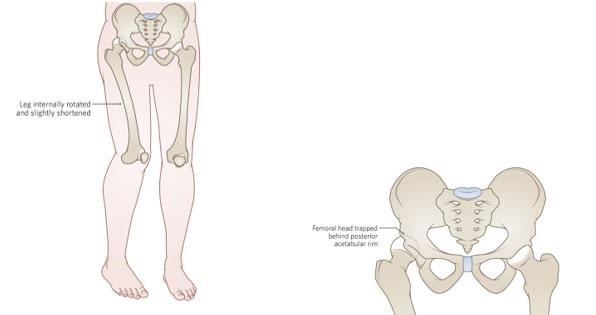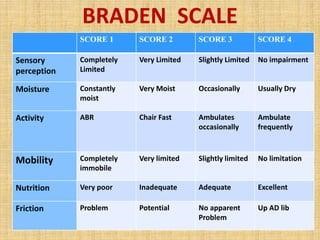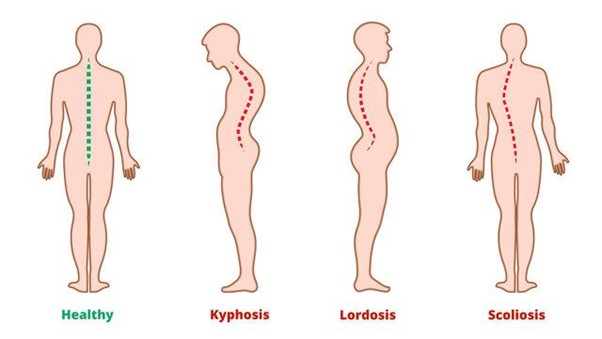Med Surg 102
ATI Med Surg 102
Total Questions : 50
Showing 10 questions Sign up for moreA client is brought to the emergency department by ambulance after stepping in a hole and falling. During the assessment, the nurse notes that the right leg is shorter than the left leg the right hip is noticeably deformed and acute pain is noted. Imaging does not reveal a fracture. What is the most likely explanation for this client's signs and symptoms?
Explanation
A. Right hip dislocation: In a hip dislocation, the head of the femur is forced out of the acetabulum, which is the socket in the pelvis. This can cause a noticeably shorter leg, hip deformity, and acute pain. Imaging might not show a fracture in the case of a dislocation.
B. Right hip contusion: A hip contusion is a bruise on the hip, usually caused by a direct blow or trauma. While it can cause pain and swelling, it typically does not result in a noticeably shorter leg or hip deformity.
C. Right hip strain: Hip strain refers to damage to the muscles or tendons around the hip joint due to overuse or sudden twisting movements. While it can cause pain, it does not typically lead to a noticeable leg shortening or hip deformity.
D. Right hip osteoarthritis: Osteoarthritis is a degenerative joint disease that can affect the hip joint. It leads to joint pain and stiffness but does not usually cause a noticeable leg shortening or acute deformity unless there are severe complications, which are not mentioned in the scenario.

A home health nurse is seeing an elderly male client for the first time. During the physical assessment of the skin on the lower legs the skin is pale and cool to touch. The nurse notes small circular ulcers on the soles of his feet. From these findings, the nurse knows that the client has a problem with circulation. Which of the circulation condition does the nurse suspect?

Explanation
The findings of pale and cool skin on the lower legs, along with small circular ulcers on the soles of the feet, are indicative of arterial insufficiency. Arterial insufficiency occurs when there is a decreased blood flow to the extremities, often due to conditions such as atherosclerosis or peripheral arterial disease. This reduced blood flow can result in pale and cool skin, as well as the development of ulcers, which are typically round and have well-defined borders. It is essential to assess and manage arterial insufficiency promptly to prevent complications like tissue necrosis and gangrene.
A nurse is completing a risk assessment on a new admission. Which standardized scale will the nurse use to calculate the client's risk for pressure ulcers?
Explanation
A. Morse Scale:
The Morse Scale, also known as the Morse Fall Scale, is used to assess a patient's risk of falling. It evaluates various factors such as history of falling, secondary diagnosis, ambulatory aids, IV therapy, gait, and mental status. It is primarily focused on assessing the risk of falls, not pressure ulcers.
B. Braden Scale:
As previously mentioned, the Braden Scale assesses a patient's risk for developing pressure ulcers. It takes into account sensory perception, moisture, activity, mobility, nutrition, and friction/shear. The scale helps healthcare providers determine the level of risk a patient has for developing pressure sores and guides interventions to prevent them.
C. Bristol Scale:
The Bristol Stool Scale is used to classify the form of human feces into seven categories. It is a medical aid designed to classify the form of human feces into seven categories. This scale is primarily used to assess bowel movements and is unrelated to pressure ulcers.
D. Hendrich II Scale:
The Hendrich II Fall Risk Model is a tool designed to identify patients at risk for falls. It includes factors such as confusion, symptomatic depression, altered elimination, dizziness, male gender, and the use of antiepileptics, benzodiazepines, or non-opioid analgesics. Similar to the Morse Scale, it focuses on assessing the risk of falls, not pressure ulcers.

A nurse is teaching an older adult client who has osteoporosis about beginning a program of regular physical activity. Which of the following recommendations should the nurse make?
Explanation
A. Stretching exercises:
Stretching exercises involve gently elongating muscles and tendons, promoting flexibility and range of motion. For individuals with osteoporosis, stretching exercises can improve balance and reduce the risk of falls, which is crucial as osteoporosis weakens bones and makes individuals more prone to fractures.
B. Riding a bicycle:
Bicycling is a low-impact cardiovascular exercise that is easy on the joints. It can help improve cardiovascular health, but it might not specifically address the balance and flexibility issues often associated with osteoporosis. However, it's a good option for overall fitness and joint health.
C. Walking briskly:
Brisk walking is an excellent low-impact aerobic exercise. It improves cardiovascular health, strengthens muscles, and aids in weight management. Walking can be adapted to various fitness levels, making it a suitable exercise for many older adults. While it doesn't specifically focus on flexibility, it promotes overall health and well-being.
D. High-impact aerobics:
High-impact aerobics involve activities like jumping, running, or intense dancing. These exercises can stress the bones and joints, potentially leading to injuries, especially for individuals with osteoporosis. High-impact exercises are generally discouraged for people with osteoporosis due to the increased risk of fractures.
A nurse educator is providing an in-service to nursing staff about urinary tract infections (UTP). Which statements made by the staff validate they understand the etiology and pathophysiology of UTIs? Select all that apply.
Explanation
A. "UTI’s can be caused by urethrovesical reflux which is the backward flow of urine from the urethra to the bladder after coughing, sneezing, or straining":
This statement is correct. Urethrovesical reflux can contribute to UTIs, especially in women, as it can introduce bacteria from the urethra back into the bladder.
B. "UTI’s are more common in women due to their longer urethras":
This statement is correct. Women have shorter urethras than men, which makes it easier for bacteria to travel into the bladder, increasing the risk of UTIs.
C. "Glycosaminoglycan (GAG) is a protein in the urinary tract that exerts a nonadherent protective effect against various bacteria":
This statement is correct. Glycosaminoglycan is a substance that lines the urinary tract and helps prevent bacterial adherence, thereby protecting against UTIs.
D. "The organism most often responsible for UTI's in older adults is staphylococcus":
This statement is incorrect. The most common bacteria responsible for UTIs are Escherichia coli (E. coli), not staphylococcus.
E. "The normal urinary tract is sterile above the urethra":
This statement is correct. Normally, the urinary tract above the urethra is sterile, devoid of bacteria. UTIs occur when bacteria enter and multiply in the urinary system, leading to infection.
A nurse is caring for an adolescent client who has pneumonia and a prescription for cefpodoxime 5 mg/kg PO for 5 days. The client weighs 88 lb. How many mg should the nurse administer? (Round the answer to the nearest whole number)
Explanation
Weightinkg=Weightinlb÷2.2
Weightinkg=88÷2.2≈40
Calculate the dose of cefpodoxime:
The prescribed dose is 5 mg/kg.
Doseinmg=Weightinkg×Doseperkg
Doseinmg=40×5=200
The nurse should administer 200 mg of cefpodoxime.
A nurse is assessing an older adult client who has osteoporosis. Which of the following spinal deformities should the nurse expect to find in this client?
Explanation
A. Lordosis: Lordosis is an inward curvature of the spine, commonly seen in the lower back (lumbar spine) or neck (cervical spine). It creates a swayback appearance. Lordosis is not typically associated with osteoporosis.
B. Scoliosis: Scoliosis is a sideways curvature of the spine, creating an "S" or "C" shape. While scoliosis can occur in people of all ages, it is not directly caused by osteoporosis.
C. Ankylosis: Ankylosis refers to the stiffening or fusion of joints, often due to inflammation and progressive loss of function. It is not a spinal deformity associated with osteoporosis.
D. Kyphosis: Kyphosis is a forward rounding of the back, leading to a hunched or humpbacked posture. It commonly affects the upper back (thoracic spine) and is associated with osteoporosis, especially in older adults. When the bones in the spine weaken due to osteoporosis, they can compress and collapse, leading to the development of kyphosis. This condition is sometimes referred to as a dowager's hump when it occurs in older women.

A nurse needs to infuse three 1L bags over 12 hours. At what rate should the nurse program the pump to run in millilitres per hour?
(Round to the nearest whole number.)
Explanation
To calculate the infusion rate, you first need to determine the total volume to be infused and the total time over which the infusion will occur.
Three 1L bags need to be infused over 12 hours.
Total volume = 3 bags * 1000 mL/bag = 3000 mL
Total time = 12 hours
Now, to find the rate in milliliters per hour (mL/h), divide the total volume by the total time:
Infusion rate = Total volume / Total time
Infusion rate = 3000 mL / 12 hours = 250 mL/h
A nurse is caring for a client who has multiple long bone fractures caused by a motor-vehicle crash that happened 24 hr ago. The client tells the nurse he is short of breath and experiencing chest pain. The nurse should assess the client further for which of the following potential complications?
Explanation
A. Hypovolemic shock: Hypovolemic shock occurs when there is a significant loss of blood or fluids in the body, leading to insufficient blood volume to maintain normal circulation. Symptoms include rapid heart rate, low blood pressure, confusion, and cold, clammy skin. While hypovolemic shock is a concern in trauma patients, the symptoms described by the client (shortness of breath and chest pain) are not typical of hypovolemic shock.
B. Fat embolism syndrome: Fat embolism syndrome occurs when fat particles are released into the bloodstream, often after a long bone fracture or trauma. These fat particles can block small blood vessels, leading to symptoms such as respiratory distress, confusion, and petechial rash (small red or purple spots under the skin). While fat embolism syndrome is a concern in patients with long bone fractures, the symptoms described by the client are more suggestive of a pulmonary embolism.
C. Venous thromboembolism (VTE): VTE refers to the formation of blood clots in the veins. Deep vein thrombosis (DVT) occurs when a blood clot forms in a deep vein, usually in the legs, while pulmonary embolism (PE) occurs when a clot breaks loose and travels to the lungs. Symptoms of PE can include sudden chest pain, shortness of breath, rapid heart rate, and cough, which may produce bloody or blood-streaked sputum. Given the client's symptoms of shortness of breath and chest pain, VTE, specifically pulmonary embolism, is a significant concern.
D. Compartment syndrome: Compartment syndrome occurs when there is increased pressure within a muscle compartment, leading to reduced blood flow and potential nerve damage. Symptoms can include severe pain, swelling, and numbness or tingling. While compartment syndrome is a complication of fractures, the symptoms described by the client (shortness of breath and chest pain) are not characteristic of compartment syndrome.
A client is admitted to the orthopedic unit with a fractured femur after a motorcycle accident. The client has been placed in traction until his femur can be rodded in surgery. For what early complications should the nurse monitor this client? Select all that apply.
Explanation
A. Malunion: Malunion happens when a fractured bone heals in an improper position, leading to deformity and functional impairment. While it is a concern, it typically develops over time during the healing process and is not an immediate early complication that the nurse would monitor for in the acute phase following a fracture.
B. Compartment syndrome: Compartment syndrome is a serious condition that can occur after an injury, such as a fracture. When there is increased pressure within a muscle compartment, it can lead to reduced blood flow, potentially causing tissue damage and nerve injury. Prompt recognition and intervention are crucial to prevent complications.
C. Fat embolism: Fat embolism occurs when fat particles from the bone marrow or other sources enter the bloodstream, often after a long bone fracture or major trauma. These particles can travel to the lungs and other organs, causing respiratory distress, confusion, and other symptoms. Fat embolism is a significant concern in orthopedic trauma patients and requires careful monitoring.
D. Deep vein thrombosis (DVT): DVT is the formation of blood clots in deep veins, usually in the legs. Patients with fractures, especially those immobilized for extended periods, are at increased risk for DVT. If a clot dislodges and travels to the lungs, it can cause a pulmonary embolism, which is a life-threatening complication.
E. Pulmonary emboli: Pulmonary emboli occur when blood clots, often originating from DVT, travel to the lungs and block pulmonary arteries. This condition can lead to sudden difficulty breathing, chest pain, and even cardiac arrest. Pulmonary embolism is a medical emergency and requires immediate intervention.
You just viewed 10 questions out of the 50 questions on the ATI Med Surg 102 Exam. Subscribe to our Premium Package to obtain access on all the questions and have unlimited access on all Exams. Subscribe Now



